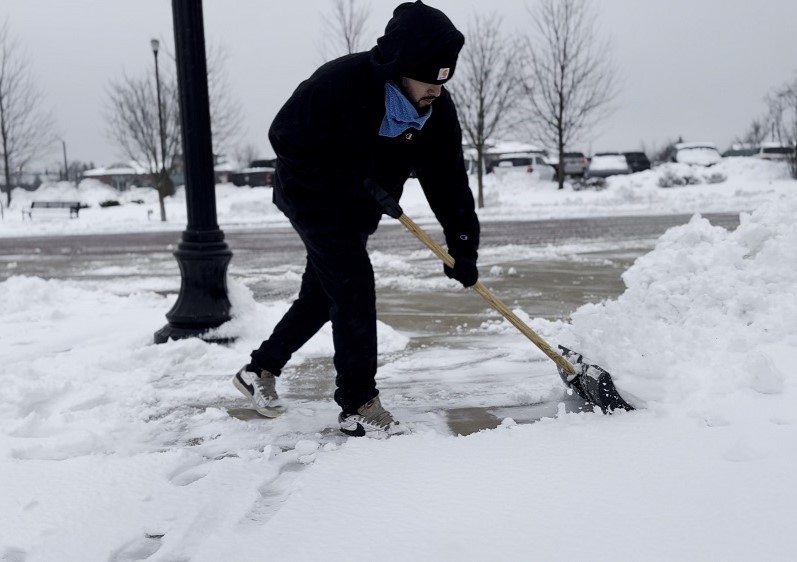Sustainability in Commercial Snow Removal
As environmental concerns grow, more facilities managers and building owners are considering sustainability when planning snow removal operations. Snow removal is essential for keeping properties safe and accessible during winter, but it can come at a significant environmental cost. However, there are several ways to make snow removal more eco-friendly, which can also lead to long-term economic benefits.

Emissions from Snow Removal Equipment
A key sustainability consideration is the type of equipment used. Older gas-powered snowblowers and plows can emit substantial pollution. According to reports from the U.S. Environmental Protection Agency, a traditional two-stroke snowblower can emit as much pollution in an hour as a car driven for 70 to 300 miles.
Newer equipment, including electric or hybrid models, significantly reduces emissions and fuel consumption. When evaluating snow removal services, facilities managers should inquire about the types of equipment used and prioritize companies that have invested in environmentally friendly alternatives and newer equipment.
Route Optimization and Fuel Efficiency
Another major contributor to the environmental impact of snow removal is the fuel consumption of snowplows and other large vehicles. Optimizing snow removal routes through GPS tracking technology can help reduce unnecessary driving, which in turn minimizes fuel use and emissions. Efficient route planning can also save on costs by ensuring that vehicles spend less time on the road and are used only when necessary.
Facilities managers should seek out companies that use real-time tracking and advanced route planning. There should be a specific plan in place for when an emergency hits to avoid wasted fuel and time. This not only supports sustainable practices but also ensures that snow removal is timely and efficient, reducing liability risks from ice and snow accumulation.
Sustainable Ice Management Practices
Salt and de-icing agents are commonly used to manage ice on roads and walkways, but they can have severe environmental impacts. Traditional rock salt (sodium chloride), for example, can seep into the soil and waterways, increasing salinity and harming aquatic ecosystems. Additionally, it is corrosive to infrastructure, leading to costly repairs over time.

More sustainable ice management strategies include using brine solutions or alternative de-icers like calcium magnesium acetate (CMA) or potassium acetate. These products are less harmful to the environment and can still effectively prevent ice build-up. Brine is applied before a storm, reducing the overall amount of de-icing product needed. By reducing salt usage, facilities managers can protect both their property’s infrastructure and surrounding ecosystems.
On-Site Resources and Reduced Travel
Transporting salt and fuel to job sites multiple times throughout a storm can also contribute to higher emissions and fuel costs. Companies that store de-icing products and fuel on-site at various locations can significantly reduce unnecessary trips, cutting down both fuel consumption and response times.
For facilities managers, it’s worth considering how efficiently a snow removal service manages its logistics. Opting for services that strategically place salt bins or have on-site fuel depots can make snow removal more sustainable and responsive.
Regular Maintenance and Efficient Operations
Proper maintenance of snow removal equipment also plays a role in sustainability. Regularly cleaned and well-maintained equipment operates more efficiently and breaks down less frequently, reducing the need for repairs and minimizing downtime. Mechanics in the field can provide real-time fixes, ensuring that snowplows and blowers are operating at optimal levels throughout the season.

Facilities managers should ask snow removal contractors how they maintain their fleet and whether they have a system in place for routine inspections and repairs. Well-maintained equipment reduces the risk of pollution due to fuel inefficiency and extends the lifespan of machinery, contributing to more sustainable operations overall.
Additional Sustainability Considerations
- Avoid Over-Salting: Overuse of salt is not only harmful to the environment but also leads to unnecessary expenses. Monitoring salt usage and combining it with other traction measures, like sand, can reduce both environmental and financial costs.
- Encouraging Best Practices: Facilities managers can also encourage their contractors to adopt best practices in snow removal, such as using meteorological data to better time salting and plowing efforts. This reduces the need for excess material and labor, improving efficiency.
- Green Certifications: Consider working with snow removal services that have green certifications or that follow environmental guidelines for sustainable snow and ice management. This ensures that the contractor is committed to minimizing environmental impact while maintaining effective services.
Conclusion
Sustainable snow removal practices are not only possible but also practical for facilities managers and building owners who are looking to reduce costs and protect the environment. By prioritizing the use of modern, efficient equipment, implementing route optimization, using environmentally friendly de-icers, and maintaining well-managed equipment, facilities managers can reduce the environmental footprint of their snow removal operations. These efforts not only help the planet but can also result in long-term savings and more reliable service during winter months.

Tom Marsan is a certified snow professional (CSP) who has been in the landscaping and snow removal industry for about two decades. He is an active member of ILCA and SIMA and is currently the general manager at Beverly Companies in Chicagoland.
The post Sustainability in Commercial Snow Removal appeared first on Facilities Management Advisor.

